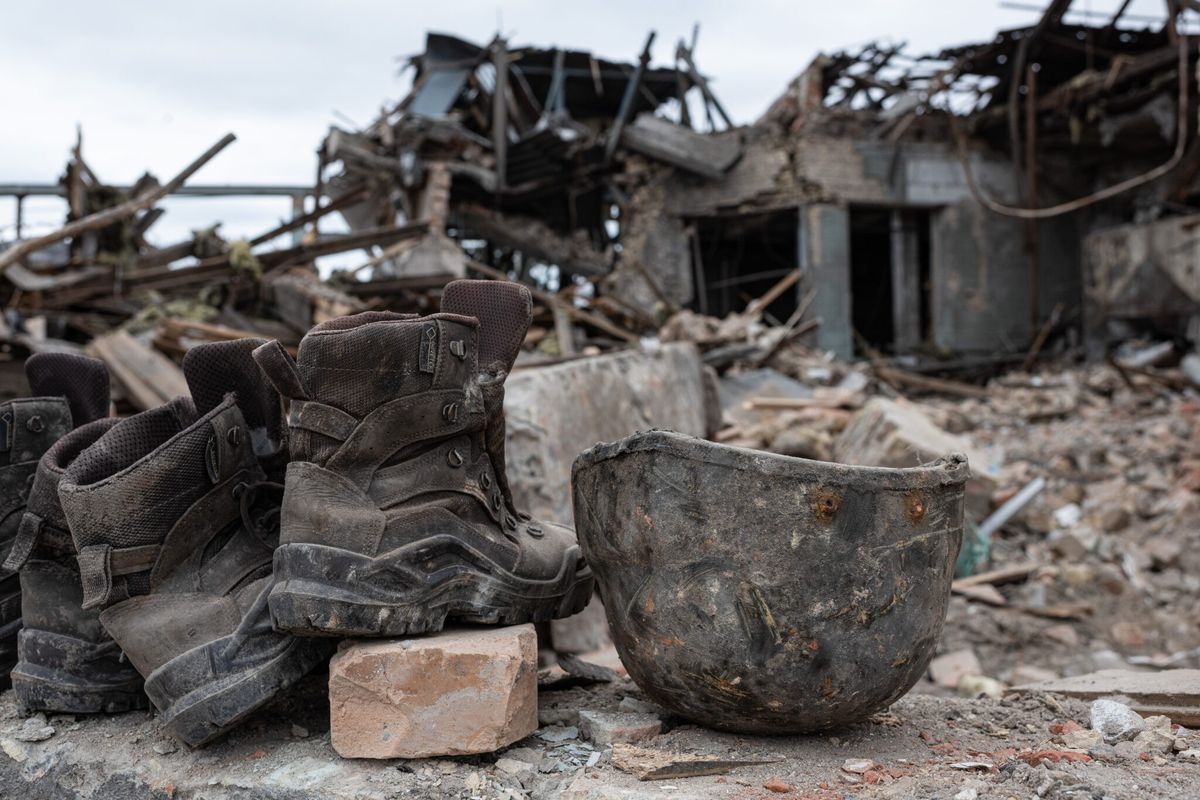Editor's Note: For this year’s Memorial Day feature, The Cipher Brief revisits its coverage examining the future of U.S. aircraft carriers.
Some planners advocate building smaller carriers that could employ many U.S. Navy supercarriers’ capabilities at less cost. With the right aircraft, a light carrier could undertake long-range strike, counter-air and reconnaissance, and sea control missions to deter conflict, manage escalation, and project U.S. power. The Cipher Brief spoke to Peter Haynes, Senior Fellow at the Center for Strategic and Budgetary Assessments, about how light carriers could be integrated into future naval operations.
The Cipher Brief: CSBA’s recent report “Restoring American Sea Power” outlines a revised fleet structure to confront new challenges to U.S. naval supremacy. What are these challenges, and how does the report envision the role of aircraft carriers changing in the future?
Peter Haynes: Primarily, the challenge is how to address the onset of great power competition and how to deter great power conflict with revisionist and increasingly aggressive states like China and Russia. But it’s not only deterrence, in practical value it’s what kind of deterrence. In the ‘90s our understanding of deterrence was essentially deterrence by compellence – if you invade this country then we will come in, and after three or four months of assembling our forces, we will go in and kick you out of that country.
Given the anti-access/area denial networks developed by the Chinese, Russians, and Iranians, for example, which threaten our ability to project power globally and come to the defense of our allies, that approach may not effectively deter such powers from aggression. In a globalized era, that approach could prove prohibitively costly as well. Political and economic interests are intertwined and the world so interconnected, so even if we’re the victor, the economic and political effects of any kind of conflict would range from problematic to catastrophic.
How then do you reshape how you do deterrence? One of the things that we argue for in “Restoring American Seapower” is a “deny-and-punish” approach. Instead of a delayed, but massive response to aggression, what I’m going to do is position more offensively equipped, more networked, and more globally arrayed and regionally savvy naval forces in areas of likely aggression to deny the threat’s goals and as well as punish the aggressor there and around the rest of the world. Those are the kinds of primary challenges that we’re looking at, from both an operational and strategic angle.
TCB: And so on changing the fleet structure to fit that model, where do you see a new role for aircraft carriers?
PH: A couple things, one is that the CVLs [light aircraft carriers] are really for augmenting the fleet—we’re not advocating getting rid of the CVNs [nuclear-powered aircraft carriers]. In the report we actually advocate for 12 CVNs and then 10 CVLs. What happens is when the LHD [landing helicopter dock] and LHA [landing helicopter assault] classes reach the end of their service life, they are replaced by a 40- to 60,000-ton CVL. This provides more flexibility and adaptability in terms of deterrence and more options for the COCOMS [Combatant Commanders] per dollar spent.
From an air wing perspective, and more importantly, the potential air wing makeup, what it really does is it takes an amphibious ready group [ARG] and vastly increases its portfolio of contingencies that it can participate in. If you have a light carrier that has catapults, arresting gear, and so forth, you can operate your E-2Ds, the [EA-18] Growlers, and unmanned utility/tanker aircraft as well. What that really does is provide an enormous amount of deterrence by positioning around what we call our deterrent forces.
These deterrent forces allow you to take the ARG-MEU [Marine expeditionary unit) combination, ramp up its capabilities to the kinds of capabilities that are in demand in today’s contested areas, and more importantly will be in greater demand in the future such as long-range strikes, long range C4ISR [Command, Control, Communications, Computers, Intelligence, Surveillance, and Reconnaissance], as well as sea control.
What we’re advocating is a CVL-based ARG. If you read the Marine Operating Concept, the CVL enables a lot of the ideas that undergird the operating concept. The Marine Operating Concept argues for the need to operate from more diverse platforms and more expeditionary bases as part of a naval campaign in a greater campaign. It argues for conducting maneuver warfare across all domains, information warfare, leveraging unmanned systems. All in all, it argues for tailorable MAGTFs [Marine Air-Ground Task Forces]. If you take a broader understanding of what we’re trying to do with a CVL, that really links up well to what the Marine Operating Concept is. What it really does is expands and increases the value of the ARG-MEU team for the COCOMs by replacing an LHD or LHA with the CVL. A CVL-based ARG would really leverage the type of creative operational thinking that the Marines are known for more so than an LH/LHA-based ARG would.
TCB: Why is this the right time for light carriers?
PH: It’s the right time because of the strategic challenges we now face and because of the trends in technology, which are shaping our operational challenges as well. Our amphibious fleet is at risk of becoming unable to support U.S. deterrence and wartime operations because it cannot conduct amphibious operations at a short range in a contested area, and lacks the reach to do so from longer ranges. The Navy and the Marine Corps need to adapt new operational concepts and field new capabilities to address these shortfalls for amphibious forces to regain the ability to exploit the maneuver of space of the sea. A lot of the shortfall stems from the anti-access/area denial capabilities that not only state, but non-state actors, are now quite capable of using. The barriers to obtaining those advanced weapons systems are falling. There’s the access challenge around the globe that tends to be around technological trends, but it’s also the strategic trends as well. Given the increasingly aggressive behavior of the revisionist powers, we need to be able to increase our naval force’s deterrent value, and do so with greater capabilities and posture around the world.
Technological trends are on our side too. The F-35B, not only in terms of its range but its [intelligence, surveillance, and reconnaissance] capabilities, packs an enormous amount of capabilities and flexibility in ways I think the Marine Corps is only starting to understand. If you put F-35s, Growlers, the E-2D – it’s essentially the Navy’s premiere platform for finding cruise missiles, ballistic missiles, and bombers on a CVL and operate them with the MV-22s, you get a lot of capabilities. Now you can see where having that kind of command and control/early warning and electromagnetic spectrum capabilities allows a CVL to do a lot of what the CVN does. Moreover, unlike the CVN, a CVL-based ARG-MEU has Marines that can be employed ashore in more creative ways, particularly in support of those emerging missions. Now you can see how a CVL, in comparison to a LHD or LHA, expands and complicates the things the threat has to worry about.
TCB: You mentioned the expanding anti-access area denial capabilities of U.S. adversaries. Is a light carrier more or less vulnerable than a supercarrier to these systems?
PH: While a CVL would be more vulnerable than a CVN because of the capacity and capabilities of the latter’s air wing, a CVL—particularly when you embark unmanned tankers, EA-18Gs, and E-2Ds—would be far more survivable than an LHD or an LHA-based ARG. With an E-2D, for example, you can use it to manage the air, sea, and undersea battle more effectively and que the AIM-120s on F-35s (or EA-18Gs) or the SM-6s off the DDGs. So while they’re more vulnerable than a CVN, they’re far less vulnerable than an LHD and an LHA would be.
TCB: Any Final Thoughts?
PH: I think you’re seeing more appreciation or more openness to the idea of CVLs which is only now starting to be studied in a holistic matter. It starts with a strategic-level conversation about how to address great power competition and deter great power conflict, and then, operationally speaking, about how to increase the capabilities that are in demand today and will be in demand tomorrow at a marginal cost of some of the ground combat elements in the Marine Corps as traditionally understood. And I think a CVL enables more creativity and really leverages the kind of adaptability and flexibility that having Marines in the ARG gives you.
In terms of the aircraft carrier itself, few appreciate—or can calculate in cost-benefit terms—just how adaptable and flexible they have proven to be across the spectrum of warfare and across such a wide range of contingencies. A Nimitz-class aircraft carrier lasts 12 presidential administrations. Conceivably that is 12 different foreign policies, defense policies, and so forth. You need weapons systems that are flexible and adaptable over the course of decades. The last commanding officer of the USS Gerald R. Ford, hasn’t even been born yet. All of this helps to explaining how to provide the most deterrent value, adaptability, and flexibility per dollar spent, particularly in an era of great power competition.











